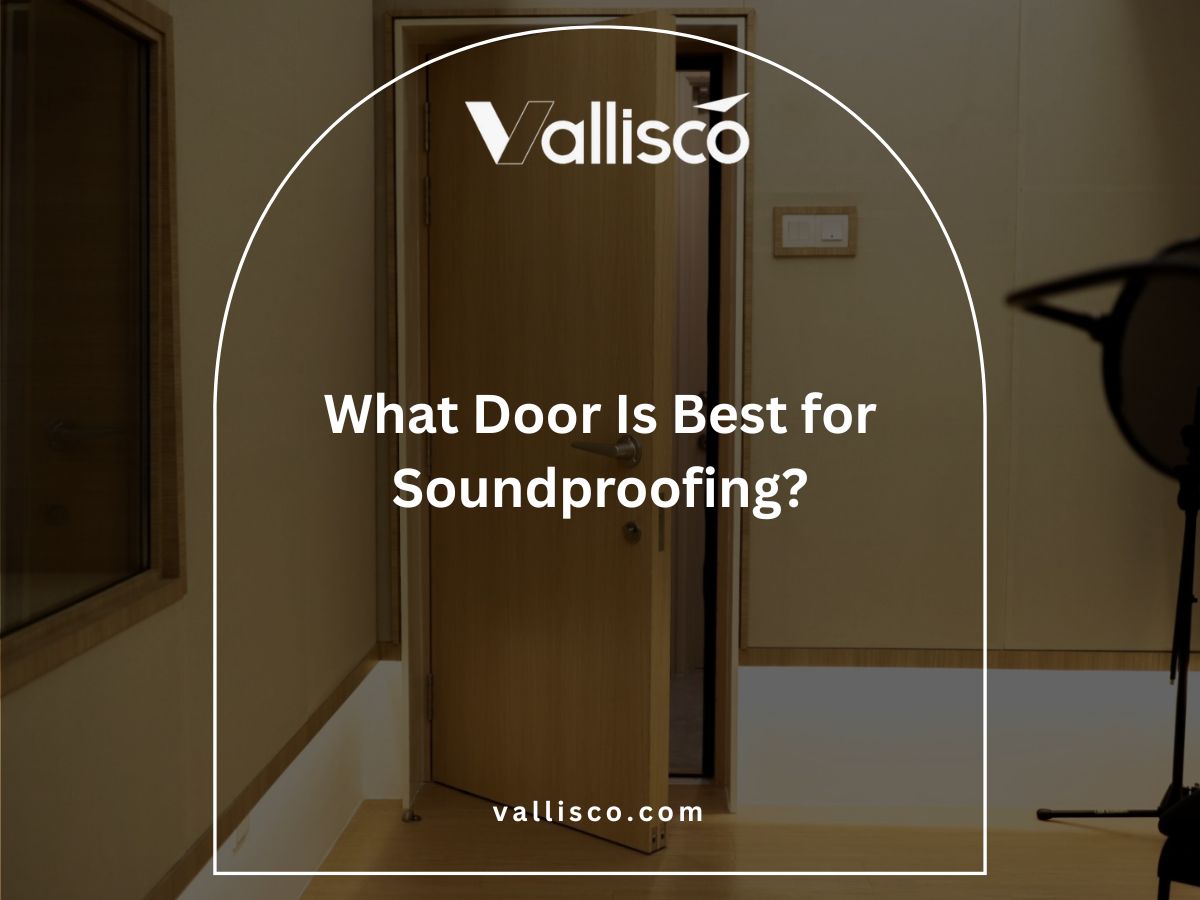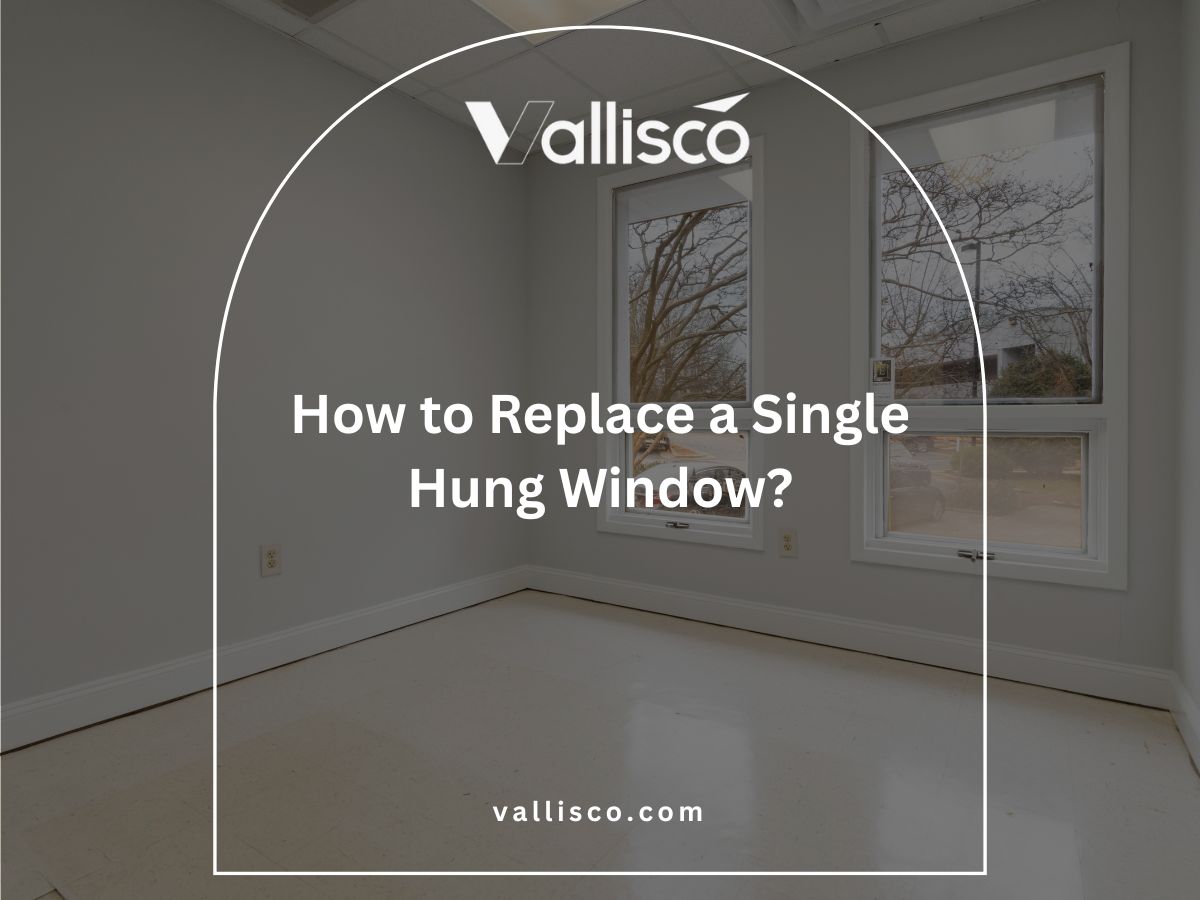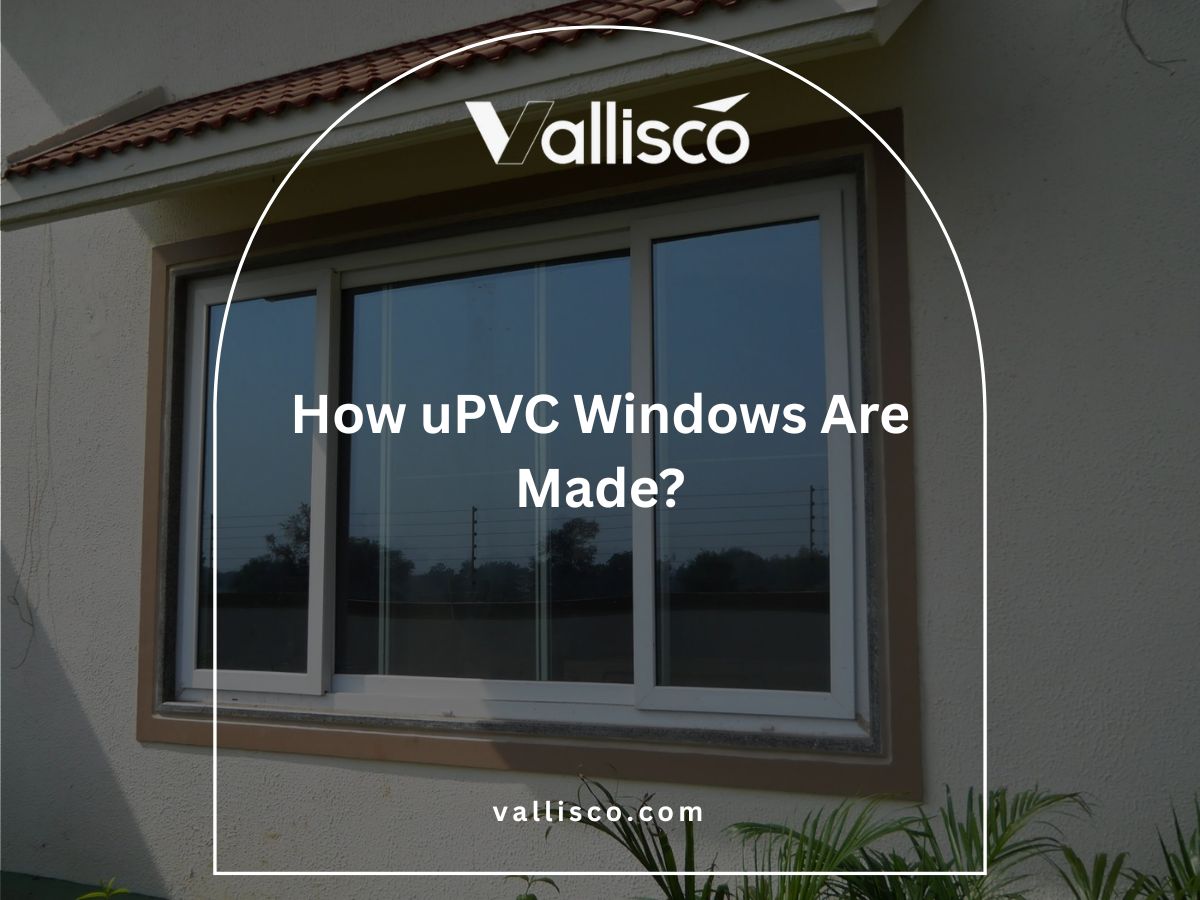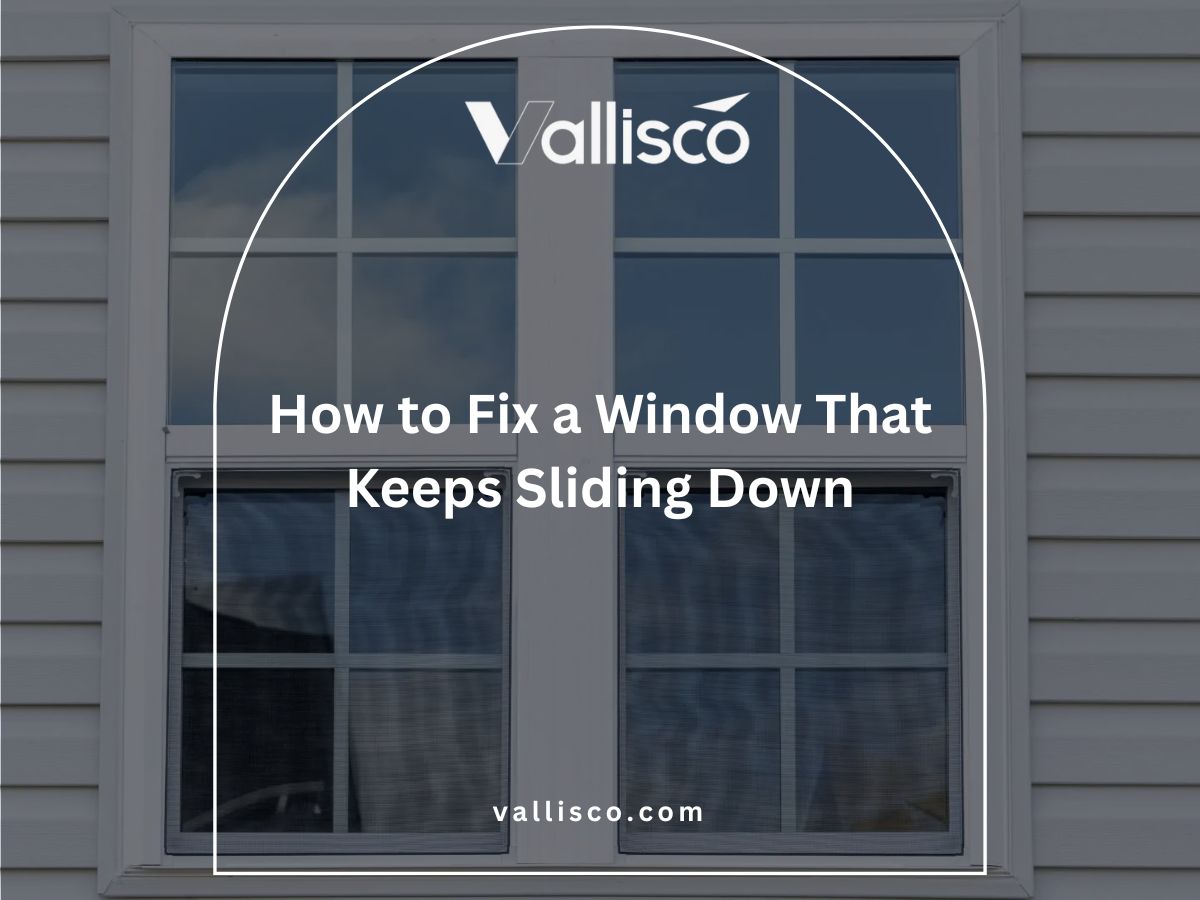We once had to replace a hotel’s back entrance twice because the steel door rusted faster than expected. It looked solid on paper, but it didn’t last in real conditions.
That mistake made me take a closer look at how steel doors are built and who’s making them.
You can trust this list because I’ve reviewed each option based on actual job-site results. This isn’t just based on specs, it’s about what really holds up over time.
In this article, you’ll find seven commercial steel doors that have been tested in real commercial settings. You’ll walk away knowing which ones are worth your time and money.
You shouldn’t have to guess which one will work.
So, let’s start!
Quick List Guide
Before we get into each type in detail, here’s a quick look at how they compare. This table gives you a snapshot of what each door does best and where it fits.
| Door Type | Best For | Key Strength | Limitation |
| Polystyrene Core | Light use, back-of-house, budget builds | Insulation | Low security, no fire rating |
| Steel-Stiffened Core | High-traffic areas, public buildings | Structural strength | Heavy, more costly |
| Mineral Core | Fire-rated zones, stairwells | Fire resistance | Chips under impact, heavier |
| Lead-Lined | Medical, dental, lab spaces | Radiation shielding | Limited use case, special handling |
| Bullet-Resistant | Security-focused entry points | Ballistic protection | Harder to source or modify |
| Louvered | Electrical, utility, HVAC rooms | Ventilation | Poor sound isolation |
| Insulated Exterior | Outdoor entrances, climate control | Energy efficiency | Heavy, no airflow |
1. Steel Door with Polystyrene Core
This is a commercial steel door filled with polystyrene foam, mainly used where insulation is more important than heavy-duty strength. I’ve seen these work well in utility rooms, small hotel back doors, and low-traffic areas. If you’re managing energy costs or just need a simple, affordable solution, this might suit your project.
Features
- Lightweight: Easy to install and doesn’t put stress on your door frame, making it practical for smaller facilities. It’s also easier for maintenance teams to handle during replacement.
- Polystyrene Core: Filled with rigid foam that gives basic thermal insulation and structural support. Good for keeping out drafts or helping your HVAC run more efficiently.
- Basic Sound Dampening: Offers minimal sound resistance which helps reduce noise from adjacent service areas or equipment rooms.
- Standard Steel Face: Usually comes in 18 or 20-gauge steel, giving enough durability for light commercial use. Holds up fine with regular use in non-critical areas.
- Paint or Coating Ready: Surface can be finished with primer, paint, or factory coatings to match your building’s design or protection needs.
Advantages
- Affordable Option: Good choice if you’re on a tight budget and don’t need heavy-duty performance. It keeps upfront costs low.
- Thermal Performance: Helps maintain indoor temperature by reducing heat loss or gain. Works well for buildings with high energy bills.
- Easy to Install: Lighter weights make it easier for your crew to mount and adjust on-site. Saves time during construction or renovation.
- Low Maintenance: Minimal upkeep over time since the foam doesn’t absorb moisture and the surface resists light wear.
Disadvantages
- Low Security Rating: Not ideal for entry points that need impact resistance or forced-entry protection.
- No Fire Rating: Most versions don’t meet fire-rated requirements, which limits where you can use them in code-sensitive areas.
- Can Warp Under Heat: The core may soften in extreme heat, which could affect long-term durability in hot environments.
2. Steel-Stiffened Core Door
This is the kind of door I’d recommend if your building deals with a lot of foot traffic or heavy use. It’s reinforced with vertical steel reinforcements inside the core, built to last longer under stress. If you’ve had issues with doors warping or bending over time, this is one worth looking into.
Features
- Steel Reinforcements Inside: Vertical steel channels are built into the core, giving the door extra strength along its full height. This makes it more resistant to twisting or bending under repeated use.
- Heavy-Duty Face Sheets: Often comes with thicker gauge steel faces, which hold up better under impacts or regular wear. Vallisco steel-stiffened core doors are built with durability in mind, making them a strong choice for high-traffic commercial spaces that demand long-term performance.
- Welded Construction: Many models come with fully welded seams, which improves durability and limits weak points around the edge.
- Custom Core Options: You can find steel-stiffened cores combined with insulation or fire-resistant fillers depending on where the door will be used.
- High Tolerance Build: Designed to stay structurally sound even when fitted into large frames or high-cycle openings, especially in public buildings.
Advantages
- High Structural Strength: Performs well in busy commercial buildings where standard doors wear out too fast. It resists sagging over time.
- Impact Resistant: Stands up to carts, gurneys, or equipment hitting it throughout the day. Great for back-of-house and service corridors.
- Longer Service Life: You won’t have to replace these as often, which helps manage long-term facility costs.
- Secure Fit: Its reinforced core allows tighter hardware installation, which keeps locks, closers, and hinges secure even after heavy use.
Disadvantages
- Heavier Weight: These doors can be hard to install without extra help or tools, especially on retrofit jobs.
- More Expensive: Costs more upfront than basic core doors, which might not fit lower-budget projects.
- Overbuilt for Some Spaces: If your area doesn’t get much use, the added strength might be unnecessary.
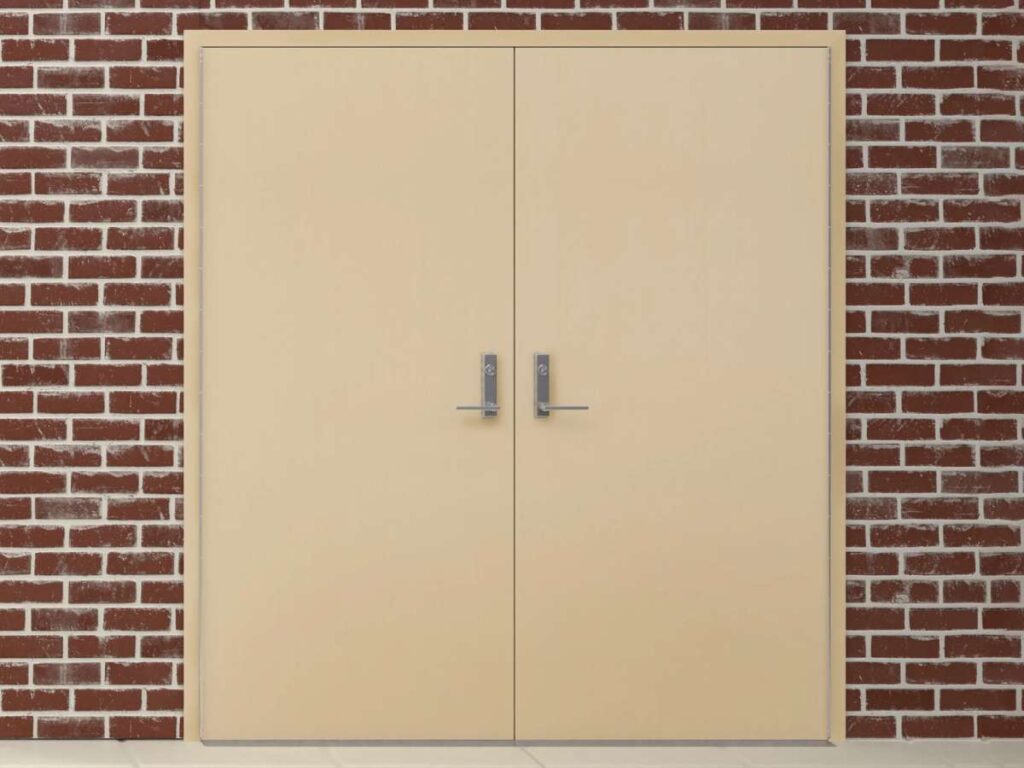
3. Steel Door with Mineral Core
This door is built for fire-rated applications, plain and simple. I’ve worked with teams who couldn’t get a building passed by inspectors until they swapped in mineral core doors. If fire resistance is non-negotiable in your project, this is the type you’ll likely need.
Features
- Fire-Rated Core: Filled with non-combustible mineral materials that can resist high temperatures for up to 3 hours depending on the rating. It’s the kind of core inspectors usually ask for in stairwells and exit paths.
- Stable Under Heat: Doesn’t deform easily in high-heat environments, which helps the door keep its shape and seal during fire events.
- Balanced Weight: Heavier than foam-filled doors, but lighter than fully steel-stiffened options. I’ve found them easier to handle during installation than expected.
- Sound Control Capability: Provides moderate acoustic performance, useful for areas like mechanical rooms or service corridors.
- Code-Compliant Construction: Typically meets fire, smoke, and life safety standards required for commercial facilities like hotels, hospitals, and schools.
Advantages
- Reliable Fire Protection: Meets strict code requirements in high-risk areas. If you’re building for public use, this door keeps you covered.
- Good Thermal Barrier: Even though it’s not built for insulation, the dense core helps slow heat transfer between rooms.
- Versatile Use: Works in stairwells, corridors, equipment rooms, and other parts of buildings that require fire-rated assemblies.
- Cleaner Safety Inspections: I’ve had fewer delays during final walkthroughs when mineral core doors are already in place.
Disadvantages
- Heavier Than Foam Cores: Adds more weight to the frame and hinges, so you’ll want to reinforce openings if needed.
- Less Durable Under Impact: While fire-resistant, these doors can chip or dent more easily than steel-stiffened options when struck hard.
- Costs More Than Basic Options: Not the most expensive choice, but still a step up from polystyrene or honeycomb cores in terms of price.
4. Lead-Lined Steel Door
A lead-lined steel door is specifically designed to block radiation in environments like imaging rooms, testing labs, or medical clinics. Built with a continuous sheet of lead inside, it’s a must for any space that requires radiation shielding. These doors help maintain safety without disrupting the look or function of the building.
Features
- Internal Lead Sheet: Built with a continuous layer of lead inside the core, offering protection from radiation exposure in sensitive rooms.
- Steel Exterior Finish: Looks like a standard steel door on the outside, which helps maintain a clean and professional appearance across your facility.
- Flexible Core Combinations: Can be built with mineral, honeycomb, or polystyrene cores depending on what other performance traits you need.
- Radiation-Rated Glazing Options: Allows vision panels with matching shielding, so staff can still monitor spaces without exposure risk.
- Compliance-Driven Design: These doors are manufactured to meet healthcare or lab-specific codes that require radiation protection.
Advantages
- Reliable Shielding: Blocks X-rays and other radiation effectively in dental, medical, and industrial applications where shielding is required.
- Discreet Look: Even with the lead core, the door doesn’t draw attention, it fits in well with other standard commercial doors.
- Custom Spec Availability: You can match the lead thickness to your shielding requirement without changing the entire design.
- Straightforward Integration: I’ve had teams install these using the same hardware formats as regular doors, making fieldwork smoother.
Disadvantages
- Limited Use Case: This door is only needed in very specific environments. If you don’t need radiation protection, it’s overbuilt.
- Special Ordering Process: These usually aren’t off-the-shelf items, so expect longer lead times and stricter spec checks before delivery.
- More Care in Handling: The internal lead requires attention during transport and install, you’ll want your crew to be cautious and follow handling guidance.
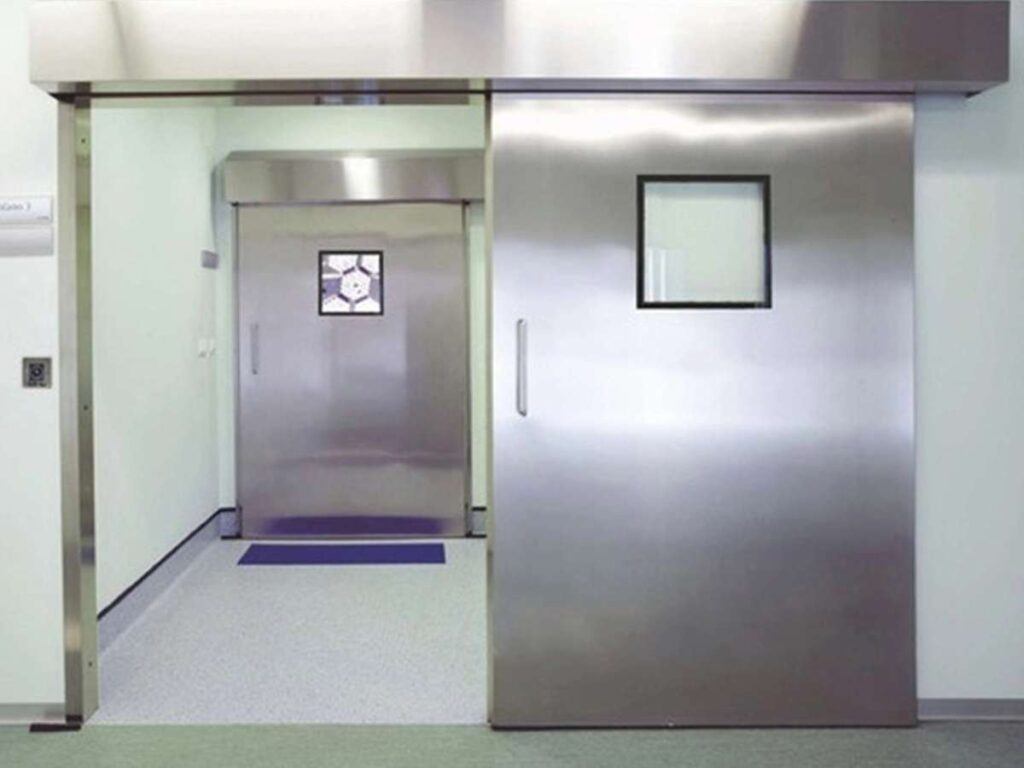
5. Bullet-Resistant Steel Door
Bullet-resistant steel doors are made to stop firearm threats and help protect people inside high-risk areas. These are commonly used in banks, government buildings, data centers, and some entry points in larger commercial spaces. I’ve recommended them before for a financial institution that needed quiet protection without advertising it.
Features
- Ballistic-Grade Core: Built with materials like layered steel, fiberglass, or composite fillers that slow or stop bullets based on the threat level.
- Rated Protection Levels: Available in UL 752 levels from 1 to 8, so you can match the door’s resistance to the level of risk in your facility.
- Heavy-Duty Steel Face: Thicker gauge skins provide additional strength and help absorb energy from impact.
- Flush or Vision Panel Options: Can include bullet-resistant glass inserts if line-of-sight is needed. I’ve seen these used effectively at guarded reception areas.
- Integrated Frame Compatibility: Often sold with a tested frame and hardware package to keep the ballistic rating intact during real-life use.
Advantages
- Safety from Firearm Threats: Gives an added layer of protection in case of armed attack or stray gunfire in sensitive zones.
- Maintains a Normal Appearance: Looks just like a regular steel door, so you don’t draw attention to the secured area.
- Flexible Applications: Useful in schools, courthouses, military facilities, and even certain retail back offices.
- Proven Testing: I’ve had suppliers walk me through their lab test reports, these doors don’t leave safety up to chance.
Disadvantages
- Limited Use Case: Most commercial buildings won’t need ballistic protection, so this door is only suitable for specific settings.
- More Complex to Source: Needs to be ordered with the right frame and hardware to meet performance standards, which can extend lead times.
- Harder to Modify Later: Once installed, upgrading or changing the specs isn’t simple, you’ll need to plan ahead carefully.

6. Louvered Steel Door
A louvered steel door is designed to allow air movement while maintaining the strength and durability of a solid metal frame. It’s commonly used in mechanical rooms, electrical closets, and utility spaces where airflow is important. This type of door supports ventilation needs without adding separate grills or ductwork.
Features
- Fixed Louver Blades: Built-in metal louvers allow continuous airflow while keeping the door structurally sound and secure.
- Angled Privacy Design: Louvers are shaped to block direct visibility while still letting air pass through.
- Flexible Sizing Options: Available with full-height or partial louver coverage to match your airflow requirements. I’ve used partial louver styles for rooms with mild ventilation needs.
- Integrated Construction: Louvers are welded into the door face to avoid rattle or movement over time.
- Protective Coatings: Most models come with rust-resistant finishes that hold up in damp or chemically active areas.
Advantages
- Supports Ventilation: Helps keep air circulating in rooms with heat-producing equipment or limited natural ventilation. If you need this type of door, Vallisco louvered steel doors are built to provide reliable airflow without compromising on strength or appearance.
- Protects System Performance: Reduces the risk of overheating by letting heat escape, which supports longer equipment life.
- Saves Wall Space: You don’t need to install separate vents or grills. Air moves directly through the door.
- Consistent Appearance: Keeps a clean commercial look while still meeting ventilation requirements.
Disadvantages
- No Sound Barrier: Sound moves through the louvers easily, which makes this a poor choice near quiet zones.
- Lower Security Level: The louvered sections can be a weak point if physical security is a top concern.
- Interior Use Only: I’ve had to clarify this on projects, these doors are not sealed against weather and should not be used on exterior openings.
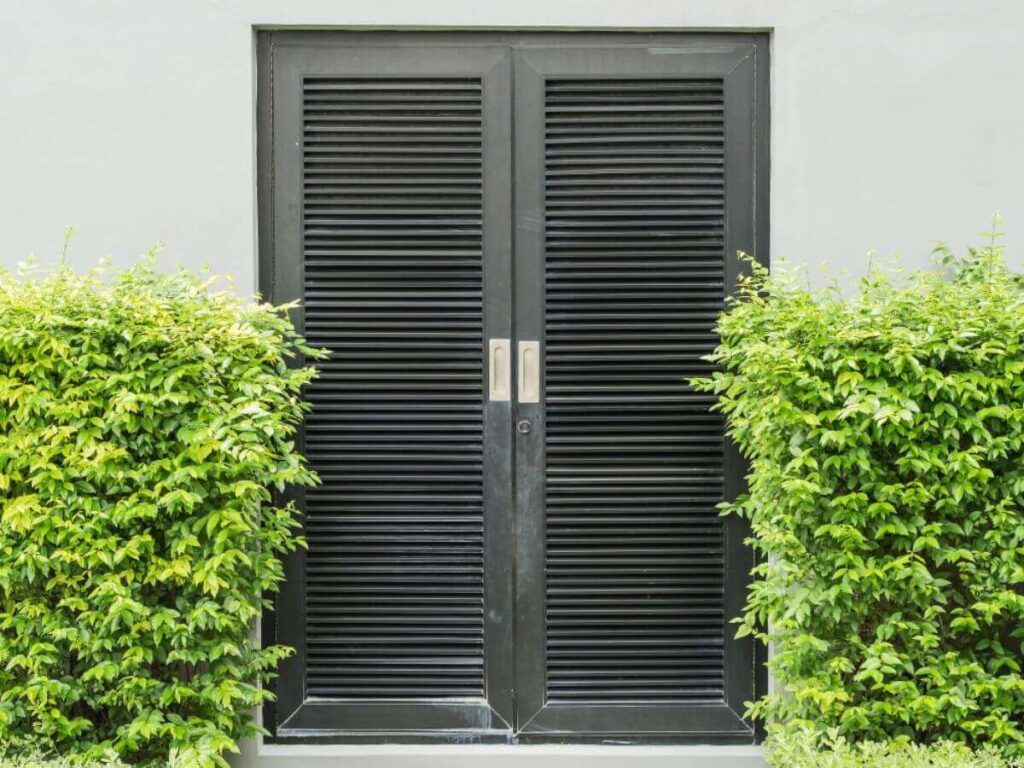
7. Insulated Exterior Steel Door
An insulated exterior steel door is made to handle outdoor exposure while keeping inside temperatures stable. It’s built for energy efficiency, weather protection, and long-term use in commercial buildings. I’ve specified these doors on jobs where keeping cold air out and security up mattered just as much as the look.
Features
- Foam-Insulated Core: Filled with polyurethane or polystyrene to improve thermal performance and reduce heat transfer between indoor and outdoor environments.
- Weather Seals and Gaskets: Comes with factory-applied seals around the perimeter to block drafts, dust, and moisture.
- Heavier-Gauge Steel Skin: Uses thicker steel sheets that can stand up to weather, impact, and high daily use. I’ve seen these hold up well at busy service entrances.
- Reinforced Edge Construction: Built with strong edge channels to prevent warping and extend lifespan in varying climates.
- Optional Fire or Security Ratings: Can be configured to meet both fire code and basic security needs, depending on your building type.
Advantages
- Energy Efficiency: Reduces heating and cooling costs by helping your building hold temperature more consistently.
- Exterior-Ready Build: Built to resist water, wind, and UV exposure without quick deterioration.
- Good for High-Traffic Use: Handles daily opening and closing at back doors, loading areas, and staff entrances.
- Helps with Indoor Comfort: I’ve had clients notice reduced cold spots and more stable interior temps after switching to insulated doors.
Disadvantages
- Heavier Than Interior Doors: The added insulation and steel thickness increase weight, which may require stronger hardware.
- Upfront Cost Is Higher: Not the cheapest option, especially if you add fire or security features.
- Limited Ventilation: Because it’s sealed for insulation, it doesn’t allow airflow like a louvered door would.
Factors To Consider When Choosing The Right Commercial Steel Doors
There’s no one-size-fits-all steel door, and I’ve learned that the hard way. What works for a hotel service entrance may fall short in a clinic, warehouse, or mechanical room.
If you want the right door the first time, here’s what I suggest you think about:
#1 Location and Exposure
Decide whether the door will be used indoors or outdoors. Exterior steel doors need weather resistance, insulation, and quality seals to protect against rain, wind, and temperature changes. Interior doors may not require the same level of protection, but they still need to match the space and handle daily wear.
#2 Security and Threat Level
Match the door’s strength to the security risks of its location. Areas with valuables or sensitive materials may need reinforced steel, stronger frames, and upgraded locking systems. Lower-risk areas can use standard steel cores but should still have solid construction.
I always tell clients to match the door’s strength to the actual risk at that location.
#3 Fire and Building Code Requirements
Know the fire rating and code requirements before you choose a door.
Some spaces must have mineral core or lead-lined doors to meet legal safety standards. Skipping this step could result in compliance issues and costly replacements.
#4 Airflow and Temperature Needs
Consider whether space needs ventilation or insulation. Louvered steel doors allow air movement for hot equipment rooms, while insulated cores help maintain climate control in offices or storage areas.
Choosing the wrong type can cause overheating or uncomfortable drafts.
Conclusion
That hotel job I mentioned? Once we switched to the right steel door, everything moved forward without delays.
Choosing the right door isn’t just about specs. It affects your timeline, your costs, and your building’s safety.
This article gave you seven strong choices. Each one solves a different problem.
Go back, review the options, and match them to your needs. If you need strong, high-quality doors, Vallisco is ready to help.
Contact us today and let’s make it easy!
Recommended Reads for You
If you need more options, take a look at our full range of products. You might find just what you need:
Still haven’t found what you’re looking for? Don’t hesitate to contact us. We’re available around the clock to assist you.



